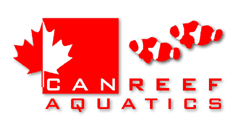
 |
|
#31
|
|||||
|
|||||
|
Over-skimming has nothing to do with removing beneficial bacteria, while such bacteria exists in the water column the amount of it compared to what attaches to surfaces in basically zero. Skimming removes bacteria about as effectively as water changes. Over skimming removes desirable elements such as potassium which can effect coral health. This can be avoided even with grossly over-sized skimmers by dry skimming rather than wet skimming and dosing to compensate.
In terms of zeovit the system is based on strong skimming, I remember previous versions of the guide actually stated you couldn't use a skimmer that was too large however that probably resulting in some using ridiculously over-sized skimmers meaning elements where depleted faster than they could be added. Thus the added note stating not too use a skimmer "too oversized" but you should still use an "over-sized skimmer". Also nothing official from zeovit suggests shutting a skimmer off during dosing, only to dose downstream of the skimmer in order to give the bacteria a chance to populate within the aquarium (same for the reactor mull). Quote:
|
|
#32
|
||||
|
||||
|
Dissolved oxygen, actual vs. ideal/theoretical
Charles
__________________
Where did my rum go?! Success in this hobby does not count how you spend your money, it counts how you spend your time. |
|
#33
|
|||||
|
|||||
|
Near impossible for a hobbyist to measure, but that might do it. Perhaps redox values instead?
__________________
Brad |
|
#34
|
|||||
|
|||||
|
I've though about monitoring orp but after all the research I've done its about as important as ph
|
|
#35
|
||||
|
||||
|
This isn't exactly true... For example, systems in which organic carbon is dosed remove a lot of bacteria via foam fractionation (skimming). This is actually the primary way in which such systems control phosphates; by removing the bacteria that bind/use/consume them from the aquarium. Also why skimmate colour changes significantly when dosing carbon (ethanol, vinegar etc). Zeovit systems also remove a substantial amount of bacteria by skimming; when the 'mulm' (basically bacterial biomass) is shaken and released, whatever isn't immediately eaten or otherwise used by the inhabitants is skimmed out.
|
|
#36
|
|||||
|
|||||
|
Why is dissolved oxygen impossible to measure? There are dissolved oxygen meters. I have one.
|
|
#37
|
|||||
|
|||||
|
Quote:
Not impossible, but not something that is useful, therefore difficult to justify a meter. Hobbyist meters are also likely not maintained well, so the value could be way off.
__________________
Brad |
|
#38
|
|||||
|
|||||
|
Quote:
Here's an affordable one http://www.amazon.com/Milwaukee-Econ...JCANWD2MRRMSER Last edited by Samw; 08-29-2014 at 08:02 AM. |
|
#39
|
|||||
|
|||||
|
Still $150 bucks! I know so many people that won't splurge on a new refractometer for $40
 And that's bit more useful And that's bit more useful 
__________________
Brad |
|
#40
|
||||
|
||||
|
Some reading for anyone who's interest in bacteria numbers , removal and what carbon dosing does to certain bacteria.
http://www.advancedaquarist.com/2011/3/aafeature
__________________
........ |